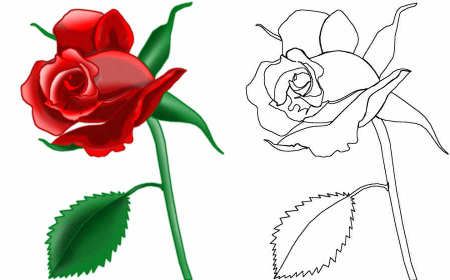There are a number of ways that you can learn how to draw a rose. The easiest way to do this is to trace them from your computer screen. To do this just go to any search engine and do an image search for a rose. Then find the rose that you like and trace it directly from the screen.
If you place a piece of printing paper onto the computer screen with the rose image on it you will be able to see a faint outline of the rose through the paper. This can be helpful because you will only be able to see the basic shapes that make up the rose image. This will also give you some ideas as to what basic outlines actually are so will be helpful if you are a beginner as it will give you a better understanding.
You can then trace the outline onto the paper with a pencil or pen. Do not press hard on your pencil or pen when doing this as it might damage your screen. You can go over your tracing again after it has been traced off the screen if you want to by placing it on a flat surface. The more times you draw a rose the better you will get at doing it.

You might want to watch it as well on the video below seeing somebody else do it helps as well.
How to draw a rose the best way.
The best way of learning how to draw a rose or anything is to start out by simplifying that which you want to draw. Reduce the object down into lines and shapes to make it more simple. Intentionally try to ignore all the fine details and simply concentrate on the outlines and shapes in order to get to the basic outline first.
When you have created your basic outlines you can start to shade and create the more detailed areas of your rose drawing. I always try to start with the lightest tones first working to the darkest tones last of all because it is easier to remove mistakes when they have been made lightly. If you make them too dark then they will be much more difficult to remove if you need to later.
I always try to leave as much of the paper showing as the lightest tone of all which is usually white. I gradually make the shadows darker and darker as I progress because this helps me focus my observations as the drawing becomes more defined. There are lots of photographs online to help you with your drawing. Learning how to draw a rose can be more difficult if you try to copy real roses so to make it easier it is best to copy from photographs.
Another way to learn how to draw a rose.
Using a reference grid is easy.

Like the example above you can draw a grid over the top of any picture you want to draw. Then copy the grid onto a piece of paper so you can see where the line touch the grid. You use these as points where you can see that the marks go into. Copying the image with help of a grid also helps to teach you to look from side to side, up and down. This is how people draw images that look good by looking in this way to find reference points and making sure they line up with each other.


